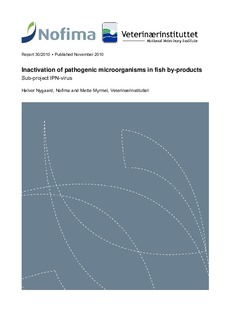| dc.description.abstract | The aim of the present study was to determine the inactivation effect on IPNV resulting from heat treatment of fish by-products at different temperatures. Furthermore, the inactivation effect of a new alternative processing method intended for category 2 fish material was examined. The method involves size reduction, organic acid treatment and heat treatment (85 ºC for 25 minutes). Decimal reduction times (D-values) and temperature coefficients (z-values) were determined after heat treatment of IPNV in artificial media resembling fish silage with regard to its content of water soluble protein and salt. The inactivation curves obtained in this study were bi-phasic. A rapid initial loss of infectivity (approximately 0,7 Log10 reduction) was followed by a much slower exponential decrease. D-values for thermal inactivation at 60, 70, 80 and 90 ºC ranged from 290 to 0,5 minutes. The temperature increase (z-value) needed to obtain a ten-fold reduction of D-values was approximately 9,8 ºC. Surprisingly, the experiments showed that IPNV infectivity was better maintained at pH 4 (formic acid) than at pH 7. However, the heat resistance of IPNV was little influenced by pH. Based on the D- and z-values obtained during heat exposure of IPNV in artificial media, IPNV inactivation during the heating phase of the new processing method (85 ºC, 25 minutes) was calculated to 27 Log10 reductions. Even if IPNV is virtually unaffected by exposure to formic acid (pH 4), the heating phase alone will be fully sufficient to ensure adequate inactivation of IPNV during the complete process. In inactivation studies using fish suspension as a matrix, no infective IPNV could be recovered from the suspension at any step. The results indicate that the fish suspension reduces the IPNV infectivity. Extended studies on other batches of fish suspensions should be performed before a general conclusion on the effect of fish suspensions can be made. | |
